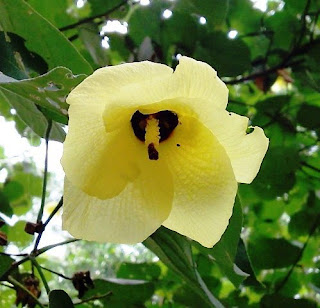The first half of the last century. A rainy day at Ooty, South India’s famous hill station. Some nuns were walking along a road in the cold.
Suddenly a car stopped by and the gentleman driver offered them a lift. He asked why they did not use a vehicle in such inclement weather. The answer was that their convent did not have one.
The next day, a local dealer delivered a brand new Dodge car at the convent. The astonished nuns thanked the donor. They also told him they could not keep the vehicle, because there was no money to engage a driver or to buy petrol.
That was no problem. The Irish gentleman assigned a driver on his payroll to the convent. He also instructed a petrol bunk to forward the convent’s bills to his office. That was John Joseph Murphy (1872 - 1957). He was the proprietor of Murphy Estates, Yendayar, which was India’s first commercially successful rubber plantation.
Another scene. An old man in a remote village receives a Money Order at the beginning of the month. That had become a routine for him and others who had retired from Murphy’s service.
A strange thing was that the message ‘This is the last payment’ was written at the bottom of every Money Order form. But the recipients were confident that the pension payment would continue till they died. Only Murphy knew the purpose of the message.
Murphy had a workforce of about 1000 people drawn from the three South Indian states. His concern for their welfare and that of their families was amazing. He was almost a century ahead of the labour unions and the government in providing amenities to the workers.
Murphy Estate had a small but pucca hospital, with a few beds for inpatients. In complicated cases, specialists were brought from outside for consultation. Patients in severe condition were taken to major hospitals far away from Yendayar. All expenses were met by Murphy.
Every married person in Murphy’s employment was provided free housing with piped water. When the couple had children, one more room was added to the living quarters.
The entire country faced severe food shortage during World War II. But the people of Yendayar were fortunate because Murphy ensured regular supplies of quality rice and other items at a great personal cost. Sub-standard stuff was destroyed.
One of Murphy’s passions was racing. He had a large stable and his horses brought him laurels from many courses in India, England and Ireland. The trophies were proudly displayed at the Yendayar bungalow.
One day Murphy found a gold cup missing. He was furious and called the police. The cops suspected an insider job and wanted to take the house staff to the police station for further questioning. That upset Murphy. He did not want his servants to face the ignominy of the police procedure. He withdrew the complaint.
Murphy’s philanthropy was legendary. No person who went to him with a genuine need had to return disappointed.
But the principal of St. Berchman’s College, Changanacherry, who approached the Irishman for a contribution to the college building fund, had a rough time. Murphy told the priest that he did not believe in college education. According to him, vocation-based technical training was more important.
Murphy’s experience with university education was rather short. He had enrolled at Trinity College, Dublin (TCD). But without completing the course, he sailed to Ceylon (now Sri Lanka) to seek his fortune. For some reason, he struck out on his own, though he belonged to a prominent Dublin family of shippers and bankers.
St. Berchman’s principal was rattled by Murphy’s reaction and mumbled defensively that they were running a weaving school also.
Anyway, Murphy donated Rs.5,000 – a princely sum those days – to the college fund. Later he made enquiries about the weaving school the principal had mentioned and sent a cheque for Rs.7,500 for modernizing it.
During World War I or shortly after it, an estate supplies company filed a case against Murphy alleging that he had smashed several bottles of liquor at their outlet in Mundakayam. The legal advice to Murphy was to deny the charge. But he refused, claiming that he would never tell a lie.
Murphy argued the case himself. He told the judge that his (Irish) blood boiled when he saw some German products on the liquor rack. He was let off with a warning.
In writing this I have relied heavily on an article about Murphy titled ‘Princely Planter’ by K. V. Thomas Pottamkulam. It concludes with the statement “I would like to think that if, instead of coming to India, he had emigrated to the United States, he might well have become the first Irish Catholic President decades before J. F. Kennedy.”
Tail piece. A few days back, on May 8 , when I checked into Lotus Club, Cochin, an young fellow named Siby brought my baggage to the room. I asked him where he was from. “Yendayar,” he answered, and added, “Murphy sahib’s place.”
I thought that his voice had a tinge of pride.
Ends.
Related post:
An Indian village remembers its Irish ‘father’.











































